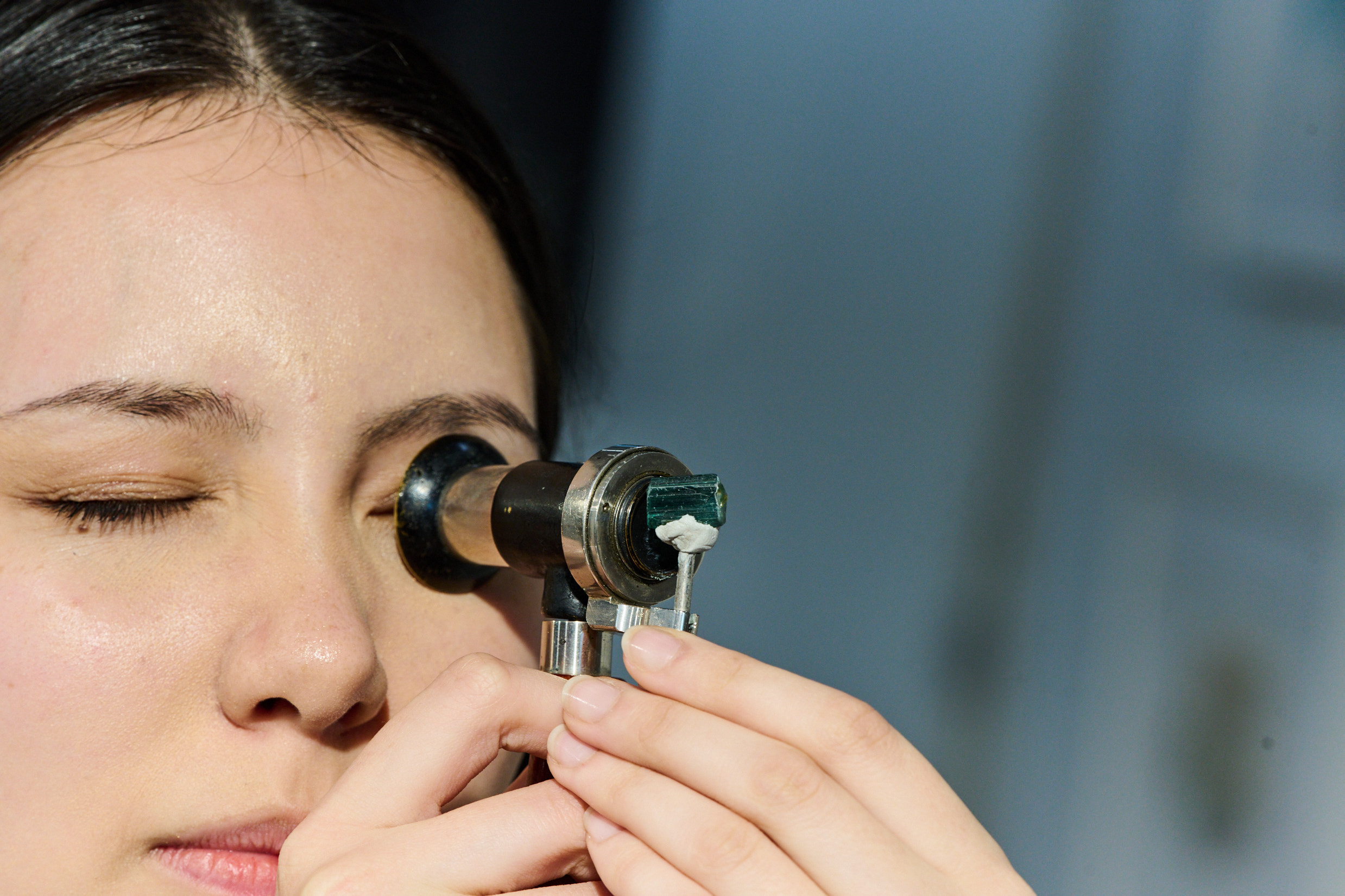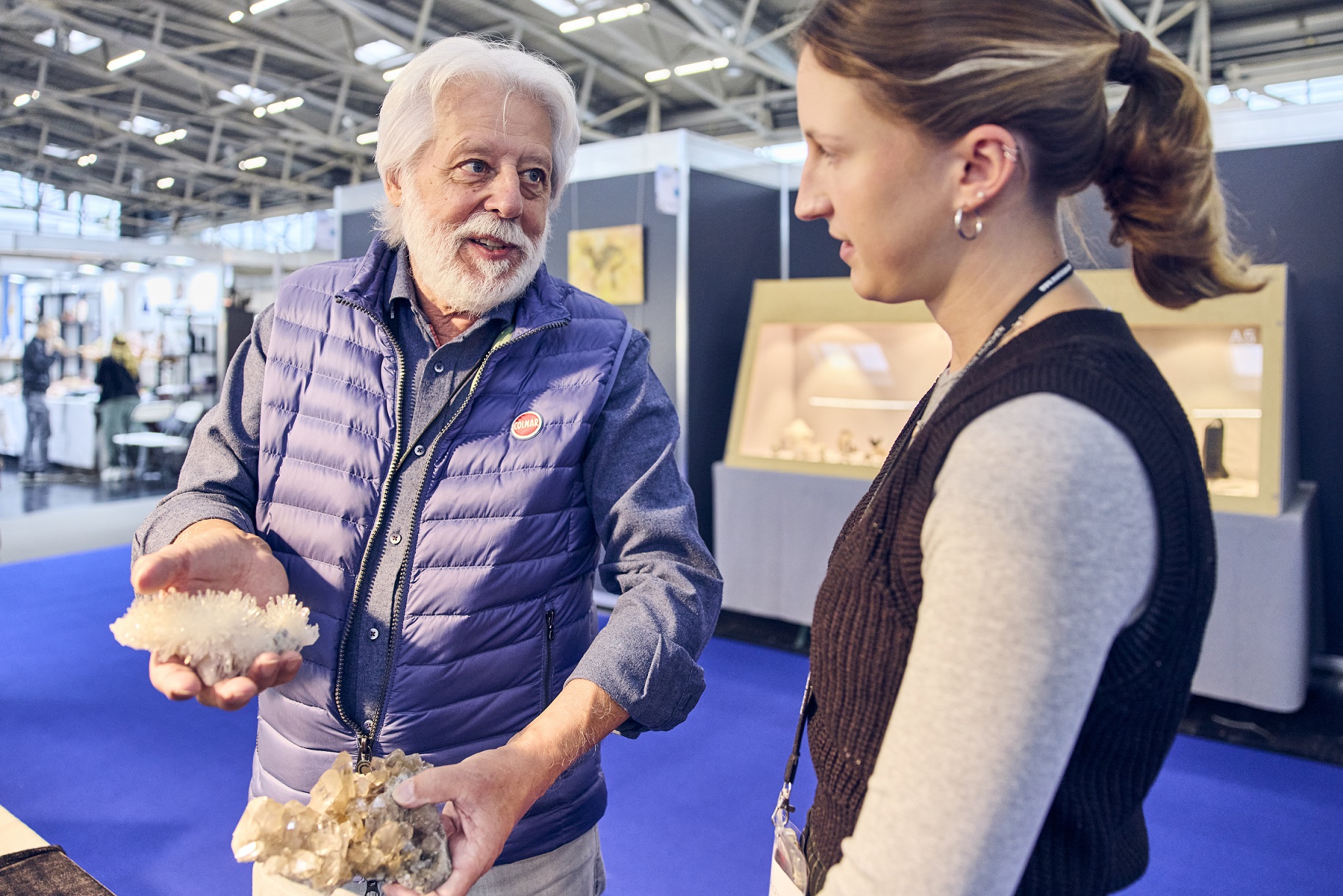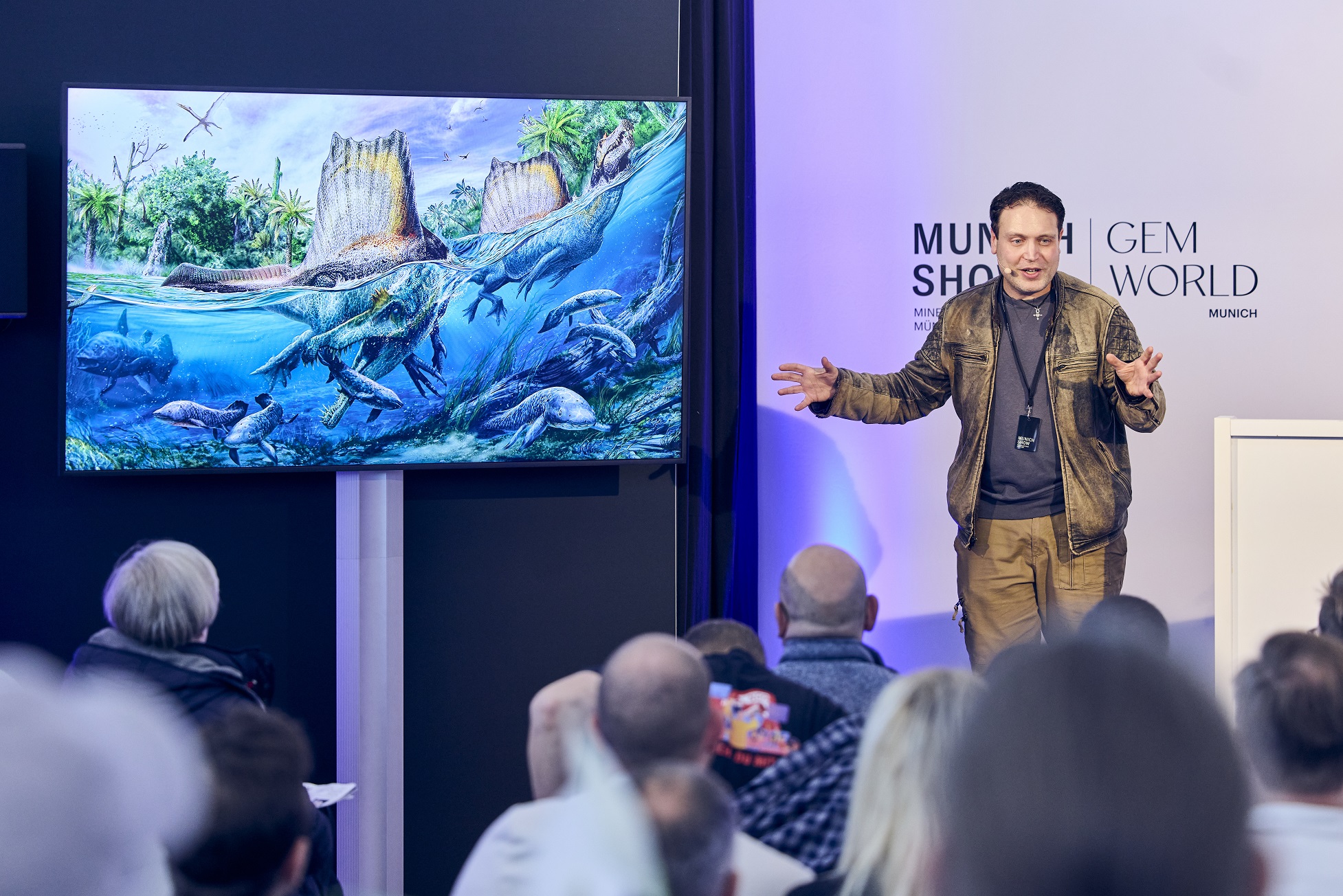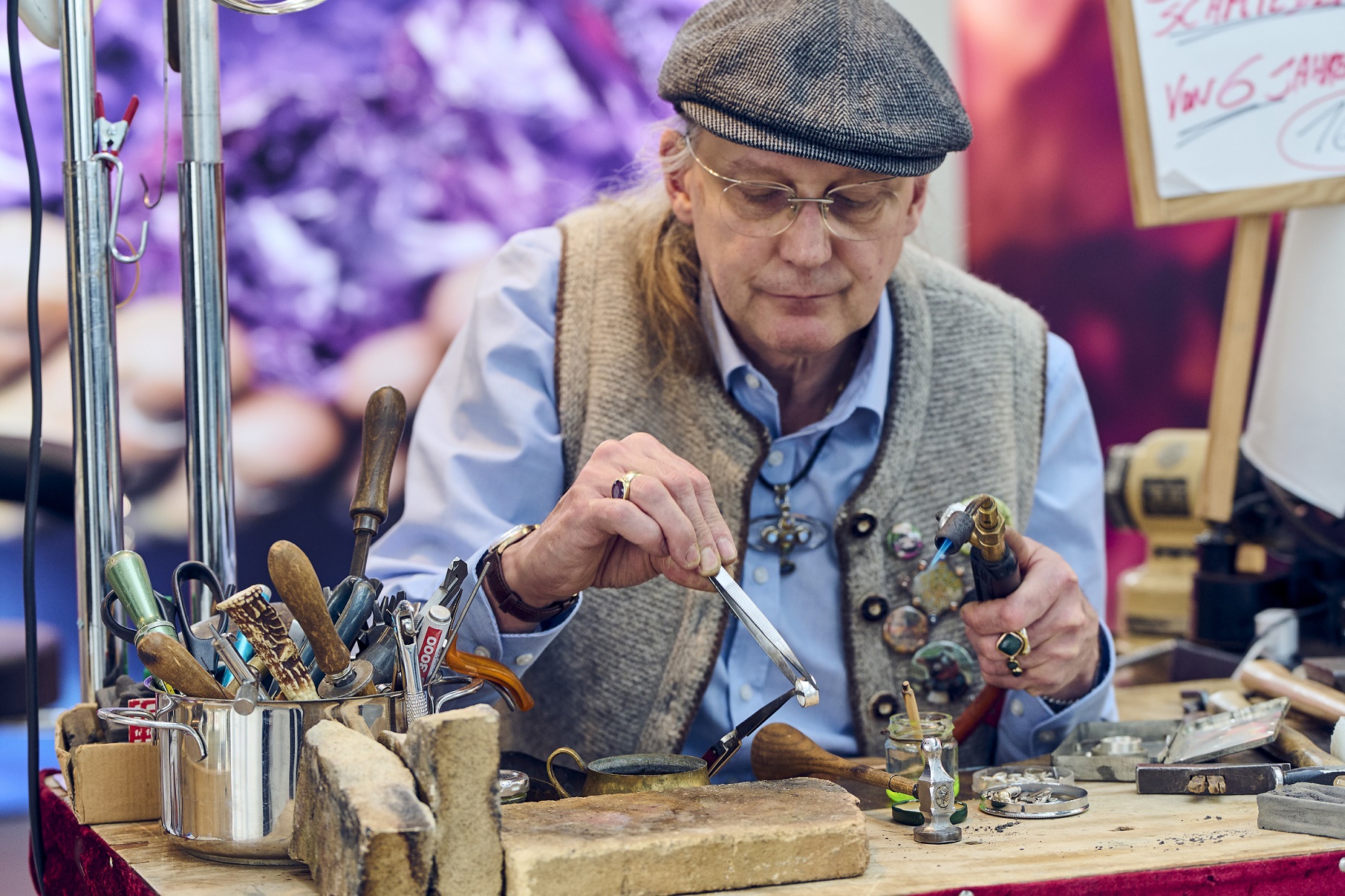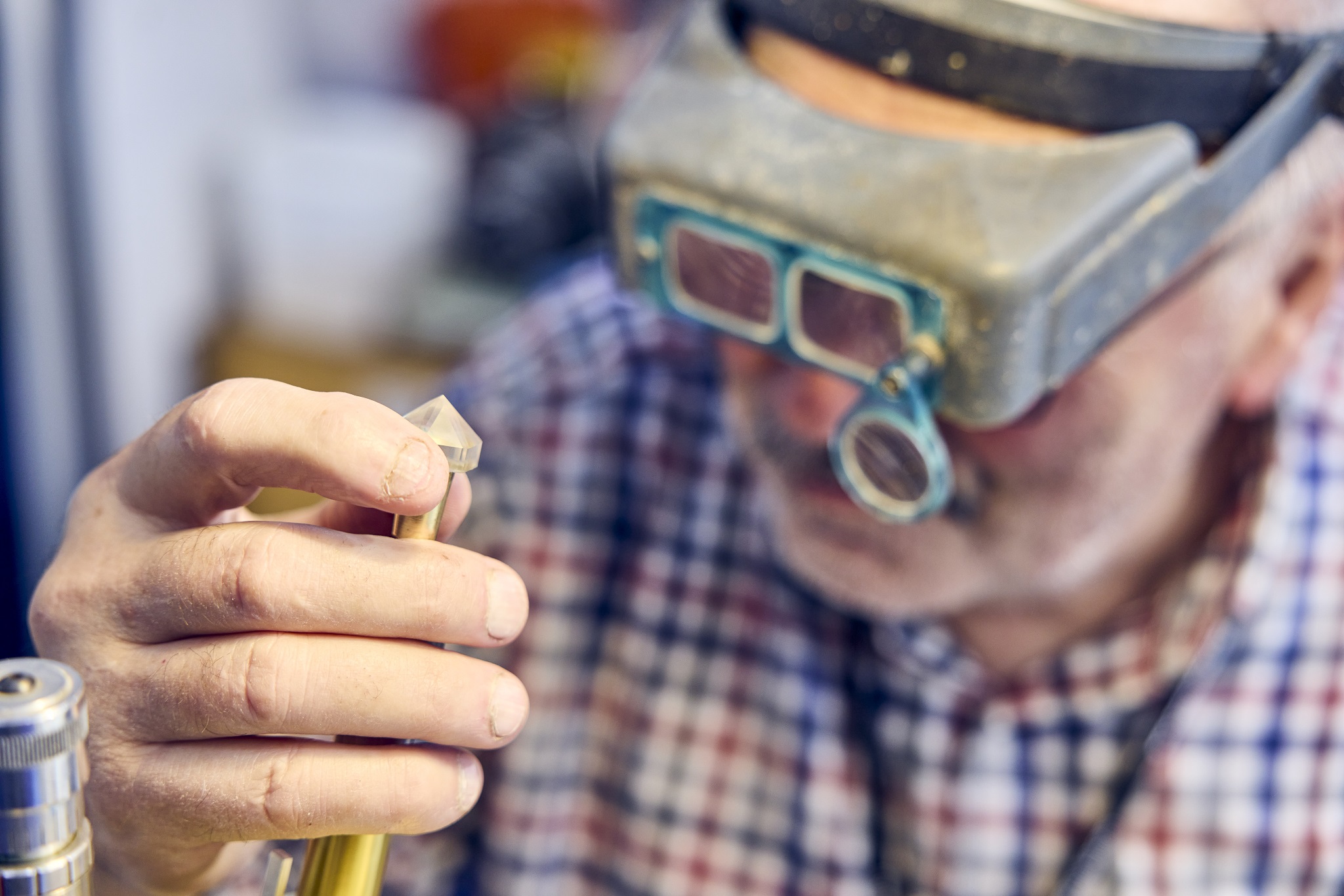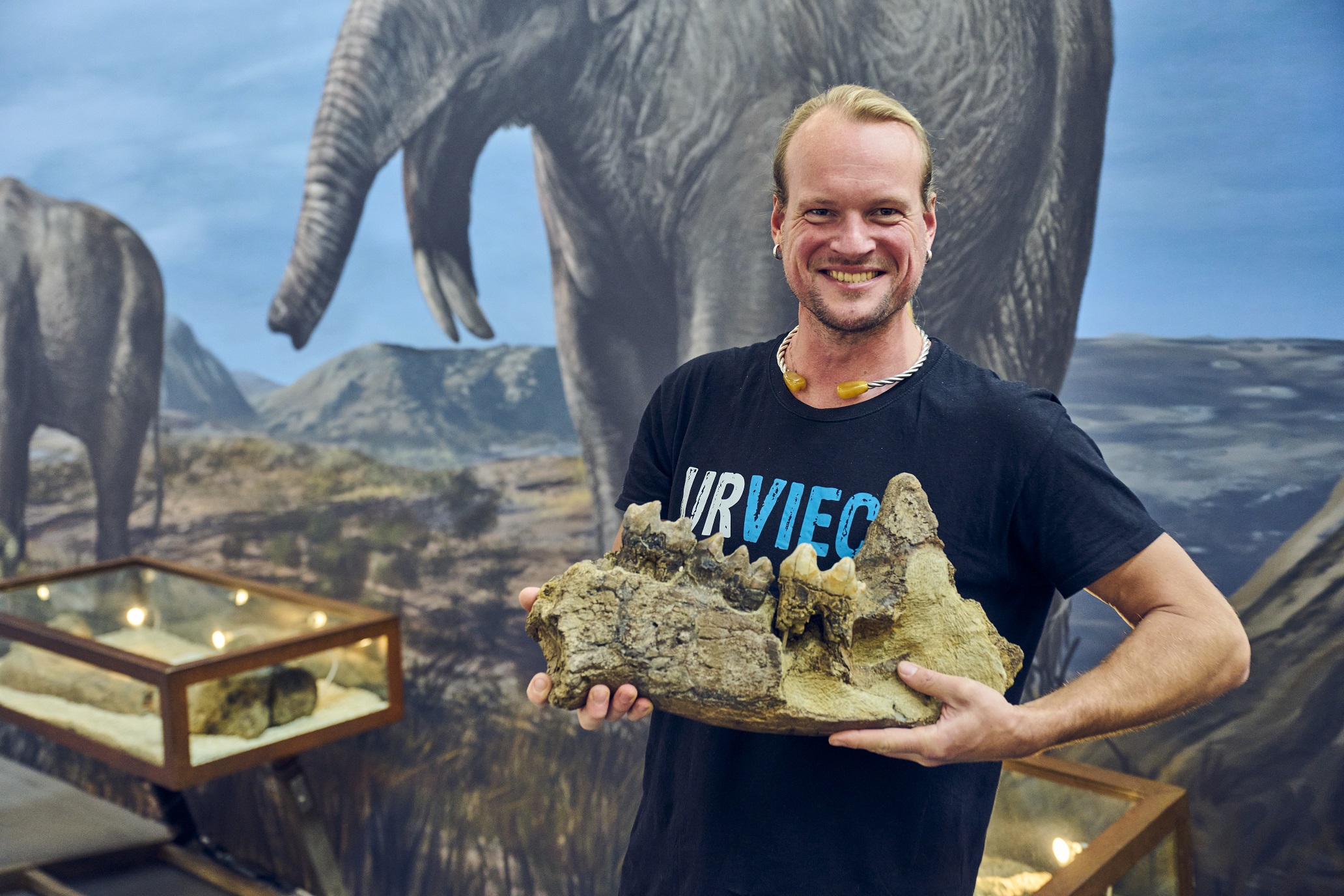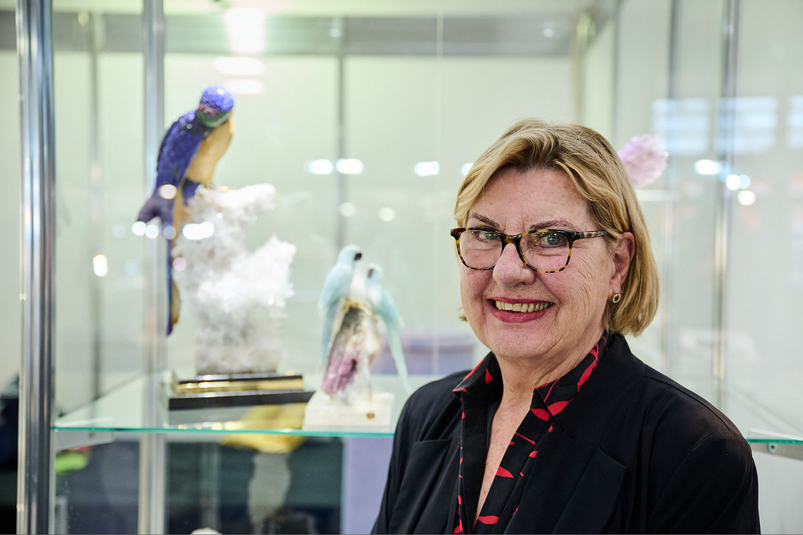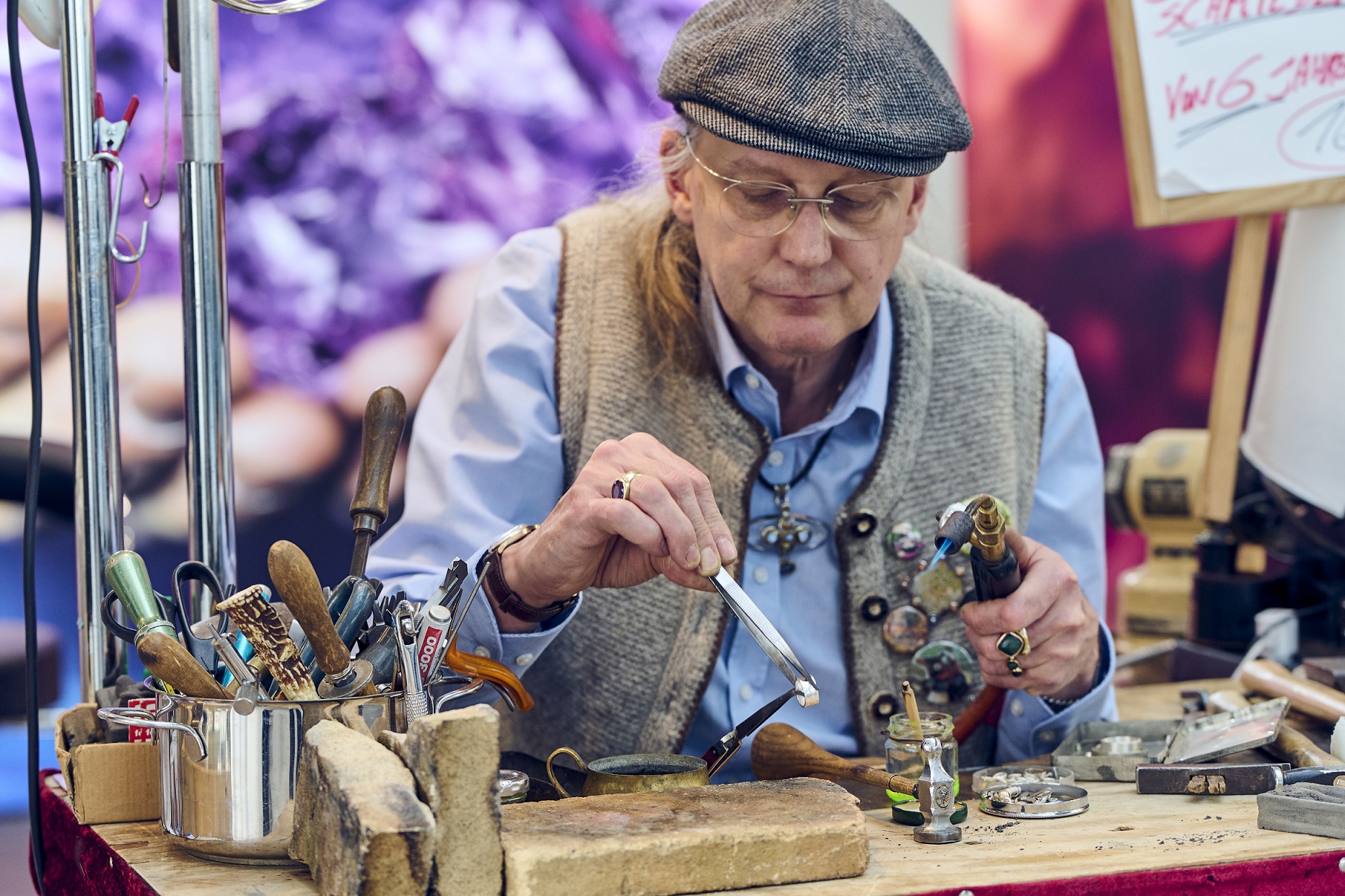
Knowledge Meets Passion
June 11, 2025
Whether sparkling gemstones, rare minerals or prehistoric fossils - behind all these treasures are people with exceptional expertise, craftsmanship and great enthusiasm for their field. At the Munich Show, you will meet a unique variety of experts: Scientists, craftsmen, collectors and designers who are happy to share their knowledge.
Get to know the professional groups who enrich the trade fair with their work, and talk to those who professionally research, shape and preserve the wonders of nature. You may even discover your own passion for one of these fascinating specialist areas.
-
Mineralogists – Science Meets Beauty
Mineralogists deal with the formation, composition and classification of minerals. The basis for this is a degree in geosciences or mineralogy. They use microscopic and chemical analyses to decipher the secrets of these natural crystal structures. At the trade fair, they make a significant contribution to the understanding of the exhibited pieces – be it through explanations of rare mineral species or background knowledge about the places where they are found. Anyone interested in the fascinating diversity of the mineral world will find mineralogists to be competent and passionate discussion partners.
-
Gemmologists – The Experts for Gemstones
Gemologists have in-depth expertise in the analysis, evaluation and identification of gemstones. Their training is usually provided by specialized institutes and is often based on a background in craftsmanship or science. They use modern analytical methods to check the authenticity, quality and origin of gemstones – indispensable know-how for the trade. At the Munich Show, gemologists will provide exciting insights into the world of gemstones, help to identify special features and answer expert questions about cuts, colors and value. A conversation with them is worthwhile for anyone who wants to learn more about the “language of stones”.
-
Strahler – Crystal Seekers in the Alps
Strahler are mineral hunters who search the Alps for naturally grown crystals such as rock crystal, smoky quartz or adularia. With a great deal of experience in geology and mountain science, they venture into high alpine terrain to discover radiant minerals in so-called fissures - often with hammers, chisels and a lot of patience. They usually work independently and deliver their finds to collectors, museums or dealers. They bring the beauty of nature to light and are important contacts at mineral fairs for anyone interested in alpine minerals.
-
Paleontologists – On the Trail of Bygone Times
Palaeontologists are specialists in fossil life forms and the history of the earth. Their academic training usually takes place as part of a geoscientific degree with a focus on paleontology. They reconstruct former habitats, analyze fossil finds and explain how life has developed over millions of years. At the Munich Show, paleontologists bring past ages to life - whether it's a dinosaur skeleton or a detailed ammonite. Their enthusiasm for science is infectious and makes you want to delve deeper into the history of life.
-
Geologists – Understanding the Earth
Geologists research the processes and materials that make up our planet. They are trained by studying geology or geosciences. They examine rocks, minerals and geological structures and provide important knowledge about deposits and the formation of raw materials. At the fair, geologists explain the geological background behind the exhibits – from volcanic rock to crystals found in remote mountain regions. Their expertise combines science with adventure and shows how fascinating the history of our planet is.
-
Goldsmiths – Craftsmanship With Finesse
Goldsmiths design jewelry with precision craftsmanship and artistic creativity. The training takes place over several years of apprenticeship in the craft, often supplemented by further training or a degree in design. They work with precious metals and gemstones and produce individual pieces of jewelry – from the design to the finished unique piece. At the Munich Show, goldsmiths show how raw materials are turned into wearable works of art. Their flair for form and material not only inspires trade visitors, but also anyone who is interested in unusual jewelry or is creative themselves.
-
Faceter & Lapidars – Precision in Perfection
Faceters, also known as gemstone cutters, are masters of the craft of transforming rough stones into brilliant gemstones. The training takes place in specialized companies and requires a lot of experience, a good eye and skilled craftsmanship. Depending on the material, they choose the right cut to bring out the best in color, shine and brilliance. At the Munich Show, visitors can watch the cutters at work and experience how an inconspicuous stone is transformed into a sparkling masterpiece. Anyone who wants to understand what makes the quality of a gemstone should not miss this opportunity.
-
Museologists – Mediators Between Collection and Public
Museologists combine scientific expertise with exhibition design and communication skills. They are trained through a degree in museology, cultural studies or related disciplines. They work in museums, archives or exhibition venues and are responsible for the conception, organization and communication of museum content. At the Munich Show, for example, museologists design special shows, supervise scientific exhibits and bring complex content to life. Their aim is to arouse enthusiasm and make specialist knowledge accessible to a wide audience.
-
Petrographers – Specialists for Rocks
Petrographers are geoscientists who specialize in the systematic investigation and classification of rocks. They are usually trained as part of a geological or mineralogical degree with a focus on petrology. They use microscopic and chemical analyses to investigate the structure and formation history of different types of rock. At the Munich Show, petrographers help to categorize rock samples and explain the geological background of finds. They are particularly competent contacts for visitors who are interested in meteorites, volcanic rock or geological processes.
-
Gemstone Engravers – Craftsmen for Gemstones and Precious Stones
Gemstone engravers, also known as stone cutters, are specialists in engraving, sculpting and shaping jewelry and gemstones. They are trained in the gemstone trade, often in traditional companies specializing in engraving coats of arms or gemstone sculptures. At the trade fair, gemstone engravers will show how rough stones are turned into artistic objects through precise cutting, grinding and polishing - from classic gemstones to figurative engravings. Their craft combines technical skill with a flair for design.
-
Engravers – fine artists on a micro scale
Engravers master the art of engraving and cutting the finest motifs in metal. They are trained as part of a craft apprenticeship or at specialized art schools. At the Munich Show, engravers present their precision work - such as engravings on jewelry or metals. Their work combines centuries-old craftsmanship with modern technology and is a real eye-catcher for anyone who appreciates detailed work and individuality. Translated with DeepL.com (free version)


